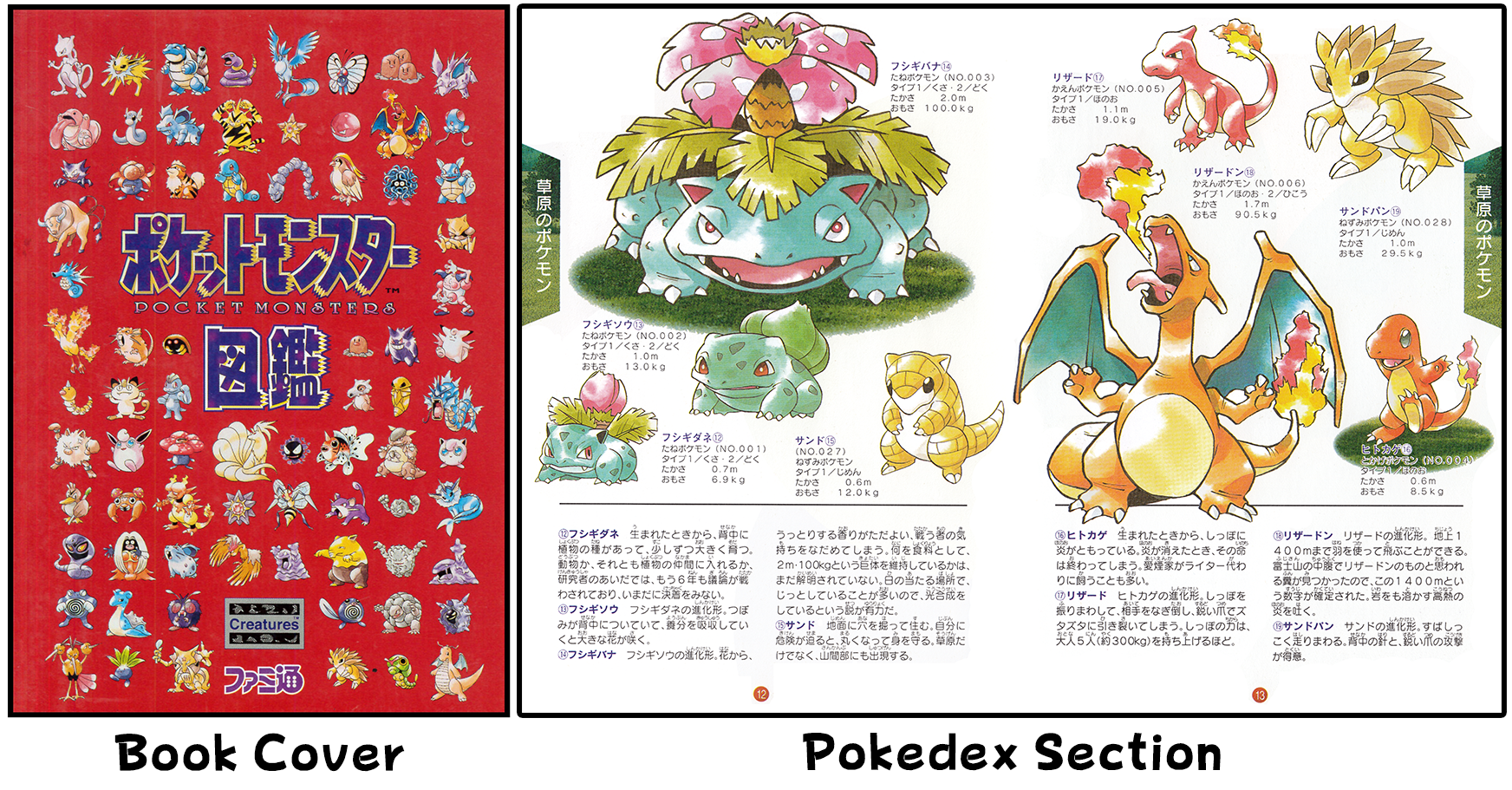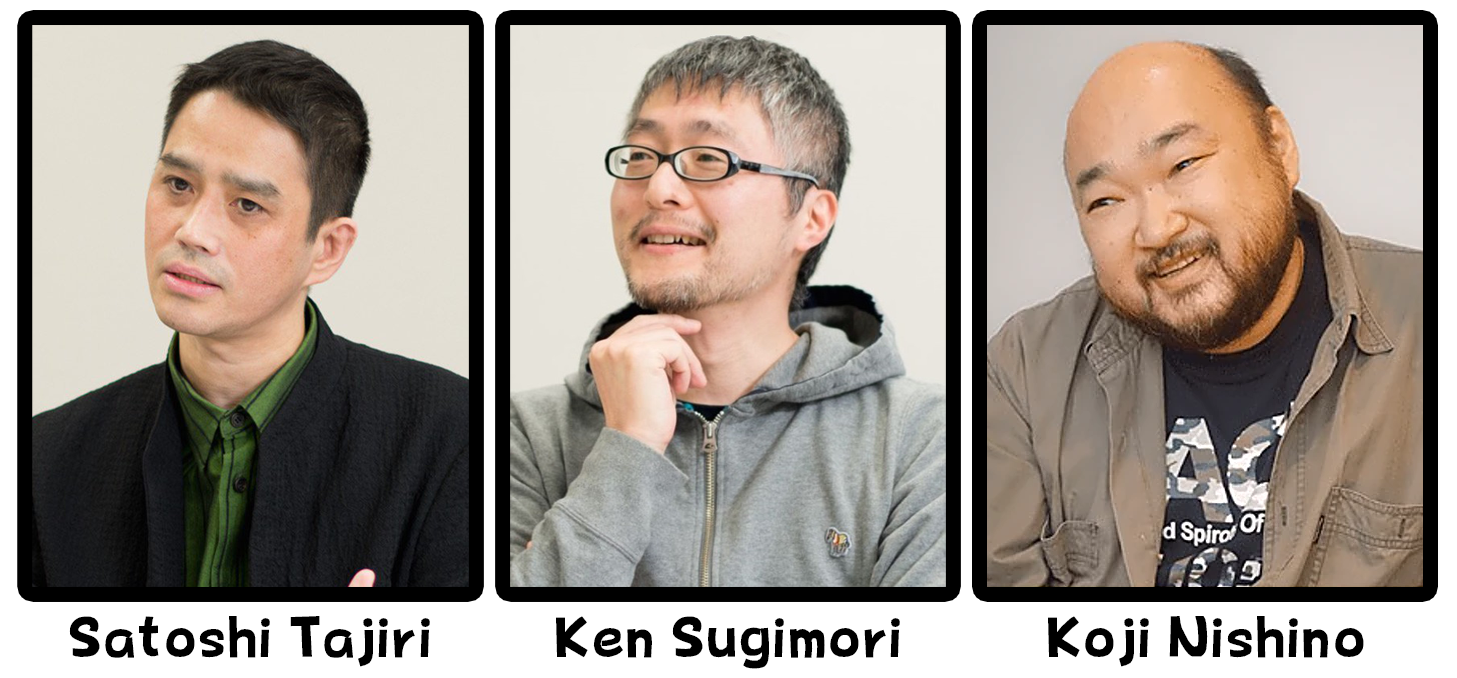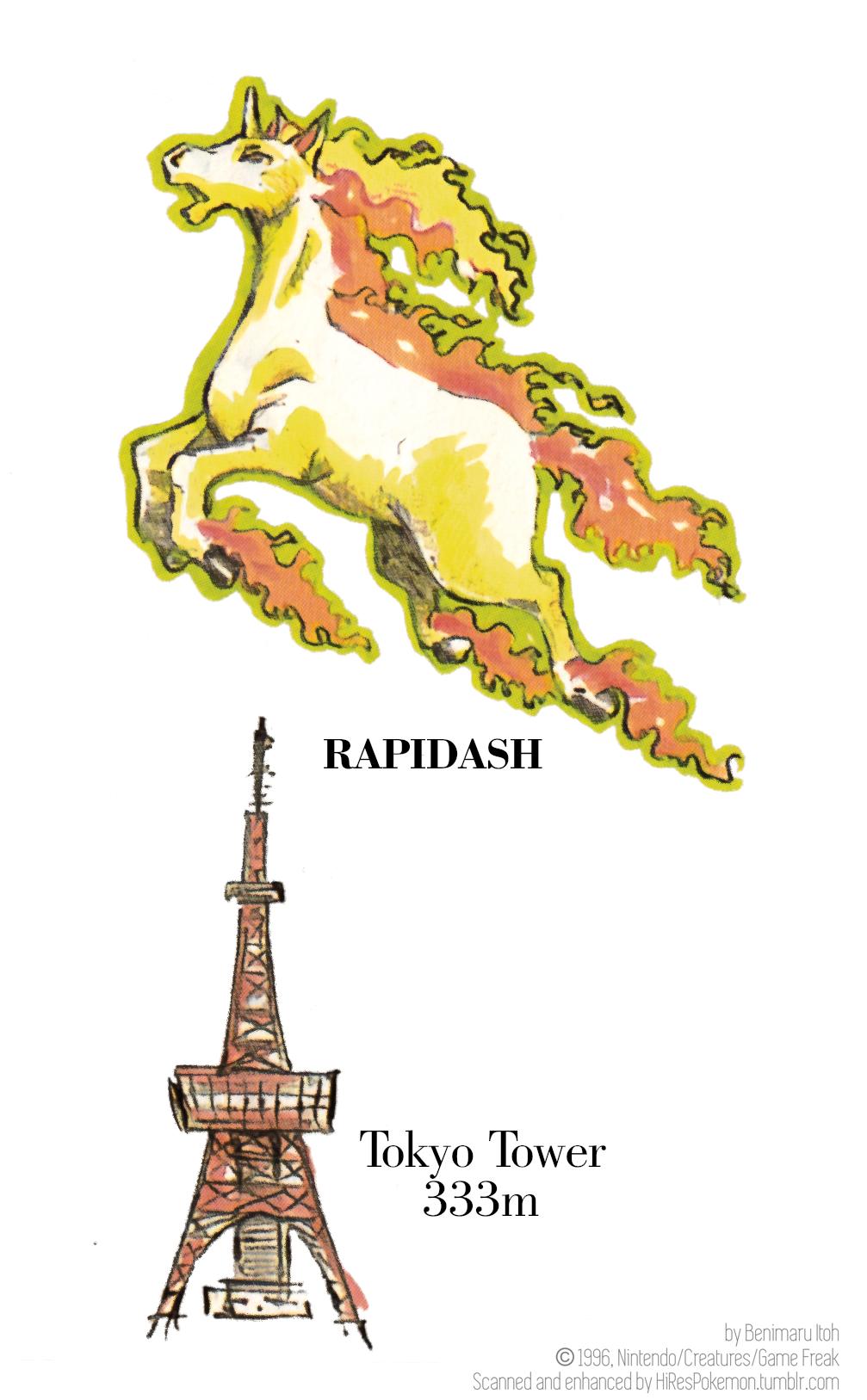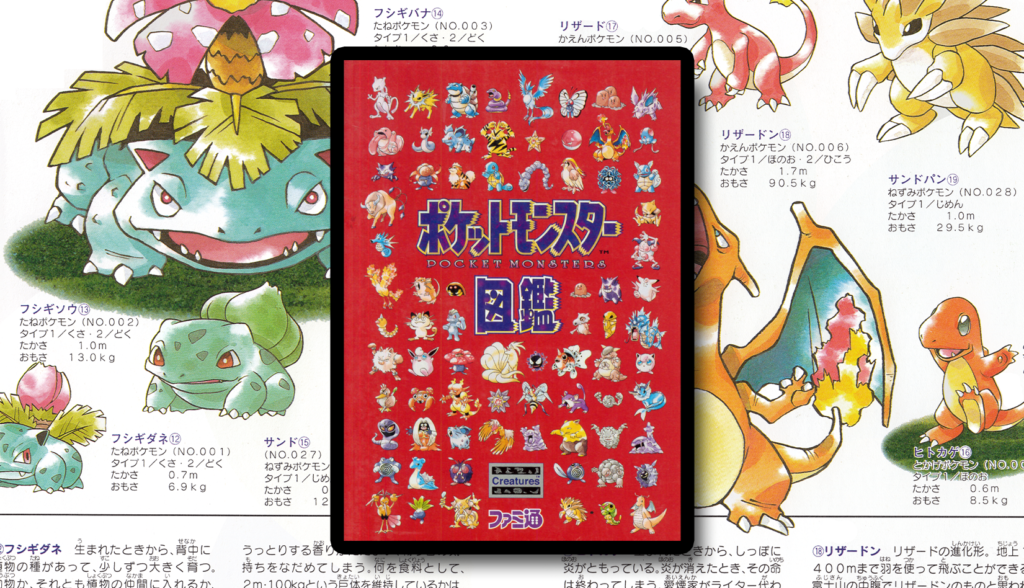
Translation: 1996 Pokédex Book (Part 1)
All 150 Pokédex entries and the introduction
Written by Dr Lava, June 17 2021
In April 1996, Creatures Inc published an official book called ポケットモンスター図鑑 , which translates into English as ”Pokédex.” This 143 page book contained an interview with all nine developers, a map section, and a lecture from Professor Oak, but the meat of the book was a 47 page Pokédex with 150 unique entries never used in the games (pictured above).
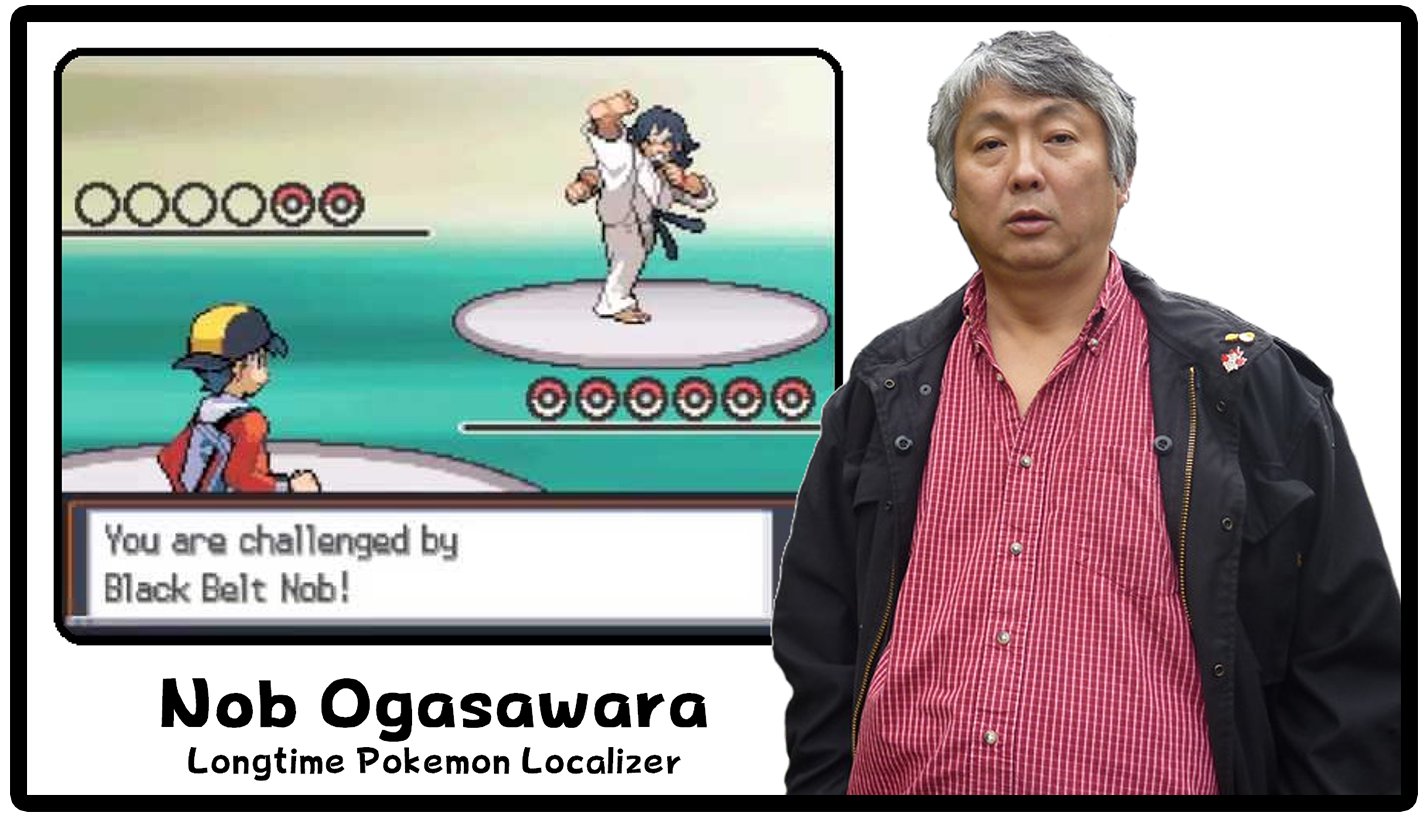
Pokédex was never released outside Japan, so we hired Nob Ogasawara to translate the entire Pokédex into English. Nob was the official localizer of Pokemon’s first four generations, including all their Pokédexes. As thanks for his years of service, Nintendo named many of the games’ NPC’s named after him. If you’d rather consume this 47 page translation in video form rather than read it as text, you can watch that video by clicking here.
This book was scanned by HiResPokemon, translated by Nob, and funded by DidYouKnowGaming and my Patreon supporters. Just before the first entry, the Pokédex begins with the following introduction.
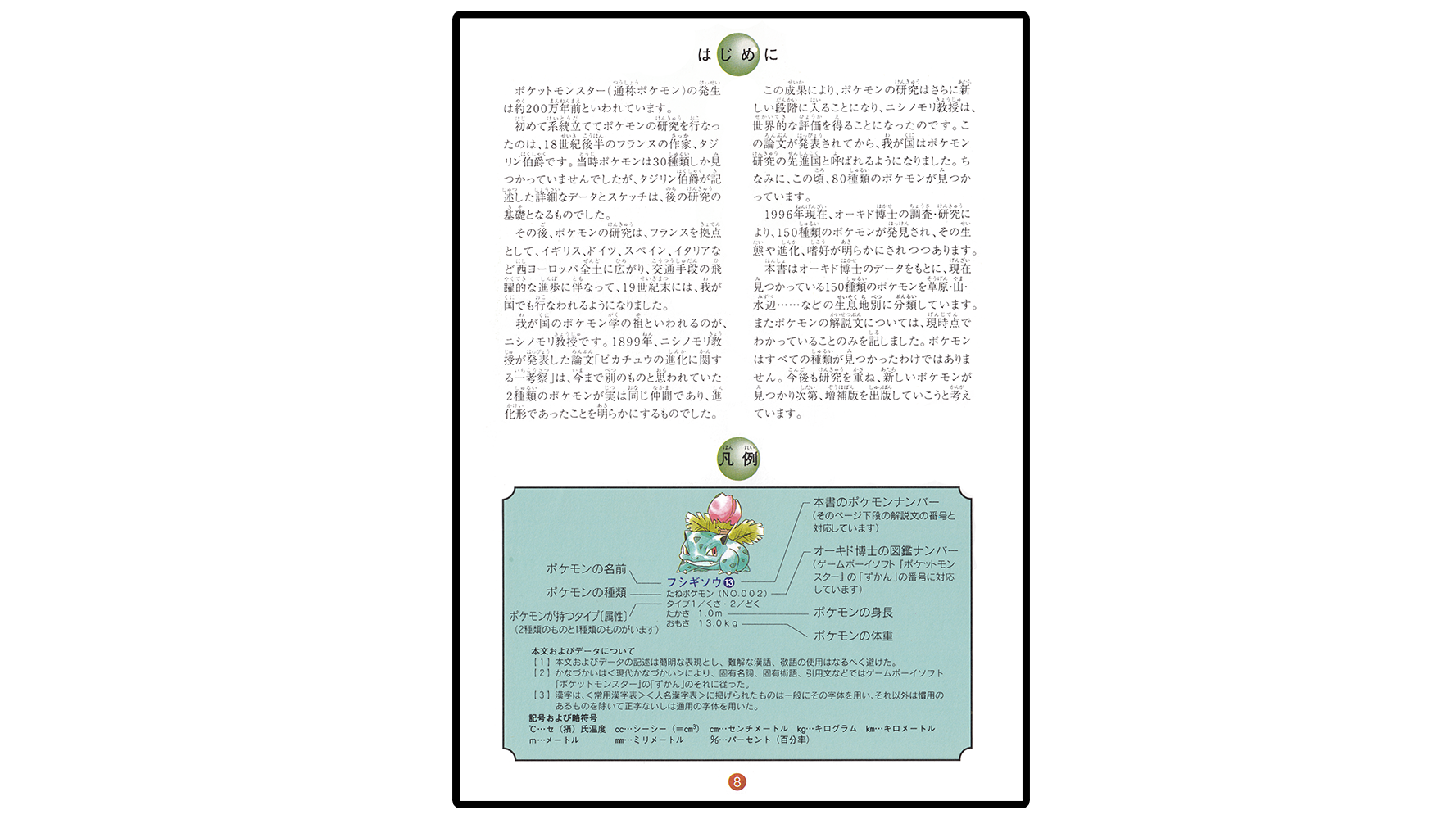
Introduction
“It is said that Pocket Monsters (colloquially shortened to Pokémon) first appeared some two million years ago. The first systematic study of Pokémon was undertaken in the late 18th century by a French author, Baron Tajirin. At the time, only 30 species had been discovered. Nevertheless, the detailed data and sketches left by Baron Tajirin became the foundations for study thereafter. From France, research into Pokémon spread throughout western Europe to include England, Germany, Spain, and Italy. In step with the incredible progress of transportation technology, the academic movement found a home in Japan at the end of the 19th century.”
“Professor Nishinomori is said to be the father of Pokémon studies in our country. In 1899, he published the paper “An Observation on the Evolution of Pikachu.” It described how two Pokémon – which had been thought to be two entirely different creatures – were actually the same. One was simply the evolved form. As a result of this breakthrough, Pokémon research entered a new phase of discovery, earning Prof. Nishinomori worldwide recognition. Because of his paper, Japan came to be known as a leader in the study of Pokémon. Incidentally, 80 Pokémon species had been discovered by then.”
“As of 1996, thanks to the investigative and research efforts of Prof. Oak, 150 species of Pokémon have been discovered. We are gradually gaining insights into their behavior, lifecycle, evolution, nature and so on. This guidebook examines the presently discovered 150 species of Pokémon by their habitats such as grasslands, mountains, and near bodies of water. The descriptive text for each Pokémon includes only facts known to date. It must also be noted that not all species of Pokémon have been discovered. We intend to continue with our research with the intention of publishing updated guides when new Pokémon are found.”
Dr Lava notes: Count Tajirin is named after Pokemon’s creator Satoshi Tajiri, who’s also the namesake for Trainer Red and Ash Ketchum, who in Japan are both called Satoshi. Professor Nishinomori is a combination of the names Koji Nishino and Ken Sugimori, two developers who played a key role in Red & Green’s development. Directly translated, Nishino means West Field and Sugimori means Cedar Forest, so Professor Nishinomori translates to Professor Westwood.
In the Japanese version of anime episode 66, Satoshi and his friends meet Professor Nishinomori the 5th, with the English localization of the episode calling him Professor Westwood the 5th. The show says he wrote all the entries in Satoshi’s Pokedex, so it’s probably safe to assume he’s the great great grandson of the Professor Nishinomori who was researching Pokemon in 1899, and who a later section of this book identifies as the creator of Poke Ball.
This Pokedex is divided up into nine classifications mostly based on habitat — Grassland, Mountain, Waters-edge, Forest, Seas, Enigmatic, Urban, Extinct, and Legendaries. A Pokemon’s habitat has certain implications regarding its size, intelligence, and the way it evolved — that is, in the Darwinian sense of the word, the way Pokemon species evolved over the past two million years. This habitat classification system wasn’t mentioned in Red & Green, but it did appear in the prototype of the Pokemon TCG, and was also used in a slightly altered form in FireRed & LeafGreen. But after that, habitat classifications were discarded and never seen again. The Pokedex’s first habitat — and by far the largest — are the Grasslands. Like every habitat, it starts with a brief introduction, and this one says:
Grasslands Pokemon
“Our country is home to many species of Pokémon. Up to now, an amazing 150 have been discovered. The largest number was found in grasslands. Being rich in food sources, it appears that grasslands represent an environment in which they can thrive. Many of the grassland-dwelling Pokémon are people-friendly and placid in nature.”

“#1 Growlithe: Friendly toward people with a loyal nature. Faced with an enemy, they bark and bite to drive their foe away. Cinnabar Island is famous as a home to many Fire-type Pokémon with Growlithe being no exception. The island was once an active volcano, but is now dormant. Its unique ecosphere is thought to have strongly influenced its native Pokémon. Recent research revealed that this Pokémon’s evolution is dependent on a stone.”

“#2 Ponyta: Their light body is supported by incredibly strong legs. They can clear Tokyo Tower in one jump. While this herbivore is peaceful, care must be taken when shoeing them – they can kick.
Dr Lava notes: You might be wondering why Growlithe is followed by Ponyta instead of Arcanine. That’s because Arcanine isn’t classified as a Grassland Pokemon, instead it’s at the end of the Pokedex with the Legendaries. This book also shows Rapidash jumping 333 meters over Kyoto Tower (seen below, translated).
Pokemon’s Kanto region is named after the real-life Kanto region of Japan, and the introduction to this Pokedex as well as many of its entries — like that Charizard poop can be found on Mt Fuji — make it clear that this early canon presents the Pokemon world as actually taking place in our world, on planet Earth in the year 1996. A few hints can also be found in the game itself, like an old man saying humankind first set foot on the moon in 1969.

“#3 Rapidash: Ponyta’s evolution. They can run up to 240 kmh. They can keep pace with a Shinkansen bullet train while enveloping themselves in flames. They obey people dutifully.”

“#4 Meowth: Being nocturnal, they sleep through the day. At night, they prowl their territory with eyes aglow. They are a happily beneficial Pokémon that can earn their trainer pocket change using their Pay Day move.”

“#5 Persian: Fickle and ferocious. Beware if they raise their tail straight. It’s a sure sign they are preparing to leap and bite. Due to their gorgeous coat, many women keep them as trophy pets.”

“#6 Mankey: Light on their feet and extremely volatile. They can fly into a rage and rampage uncontrollably. While they are usually in good spirits, their disposition can change instantly at the slightest provocation. Some researchers point to a calcium deficiency.”
Skip to: Part 1 | 2 | 3 | 4 | 5 | 6 | 7 | Journal | Maps | Itoh Art | Interview | More
